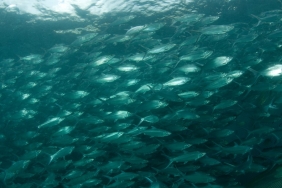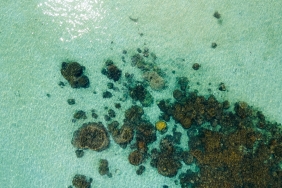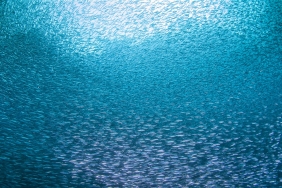"POND SCHOOL", A SOLUTION FOR SHRIMP FARMERS IN THE PINRANG MINAPOLITAN AREA
By Idham Malik, Aquaculture Officer, WWF-Indonesia
Pond School of Lowita Minapolitan Area (Lotang Salo, Wiringtasi, Tasiwali'e) was opened last August 19, 2015 at the Secretariat of Phronima Group, Tasiwali'e Village, Pinrang Regency, South Sulawesi. This contribution was made by WWF-Indonesia as part of the Lowita Minapolitan Coordinating Body, in improving the human resources of shrimp farmers.
The Pond School was established as a follow-up to the results of a gap assessment survey (gap assessment) for Better Management Practices (BMP) of Wind Shrimp Aquaculture. The survey results show that the weakest indicators of BMP implementation are in institutionalization, record keeping, and business legality. Although groups in the Minapolitan Area already exist, their role in advancing aquaculture businesses is not strong and less organized. The division of tasks and group agendas are still unclear. Cooperation between cultivators is still based on informal family ties, not yet the result of a joint agreement in the form of written law that can be accommodated in the group.
Remarks from Abdul Salam Atjo as Pinrang District fisheries extension agent and the official opening by Abdul Rahman, Head of Tasiwali'e Village, started the opening as well as the first meeting at the Pond School. Badrudin, former head of Lampung's Center for Seawater Aquaculture, was the presenter of the first meeting, which was attended by 3 extension officers, 18 farmers and 1 tiger shrimp hatchery owner. Badrudin asked the participants to explain the condition of tiger shrimp farming in the minapolitan area.
Participant representatives explained the strengths of the Pinrang community in terms of the spirit of work, the potential of natural resources, coordination between parties, government support, and innovation in the development of natural feed and cultivation methods. Complaints about pond management were also expressed, for example in the lack of regular and transparent disease data collection and cooperation between farmers in overcoming the spread of disease.
One of the inputs from the speaker related to the management of the pond area is related to the improvement of waterways with the presence of inlets and outlets. This requires support from the community who are willing to donate some of their land to be used as a water channel. Badrudin also suggested that farmers set aside some of their ponds for water reservoirs. The reservoir pond is useful for settling water and improving water quality before it is added to the enlargement ponds. Another suggestion is that farmers should reduce the size of the pond so that it is easier to control, and there should be modular pond plots, between reservoir plots, enlargement plots and natural food development plots Phronima suppa.
The first meeting of the pond school, which was enthusiastically welcomed, was a good start in institutional strengthening. It is hoped that the habit of discussion in the Pond School can help solve problems faced by farmers.
Furthermore, Pond School meetings will be conducted over the next five months - twice per month - and are expected to strengthen cooperative relationships among shrimp farmers. Curriculum materials referring to the BMPs of Wind Shrimp Aquaculture and Aquaculture Stewardship Council (ASC) certification standards are provided to increase the capacity of farmers. The Pond School curriculum outlines cultivation management (land preparation, feed, and disease), legality, institutional, environmental and social. Pond School will involve presenters who are competent in their fields, as well as related parties in the development of tiger shrimp farming in Pinrang Regency Minapolitan Area.





